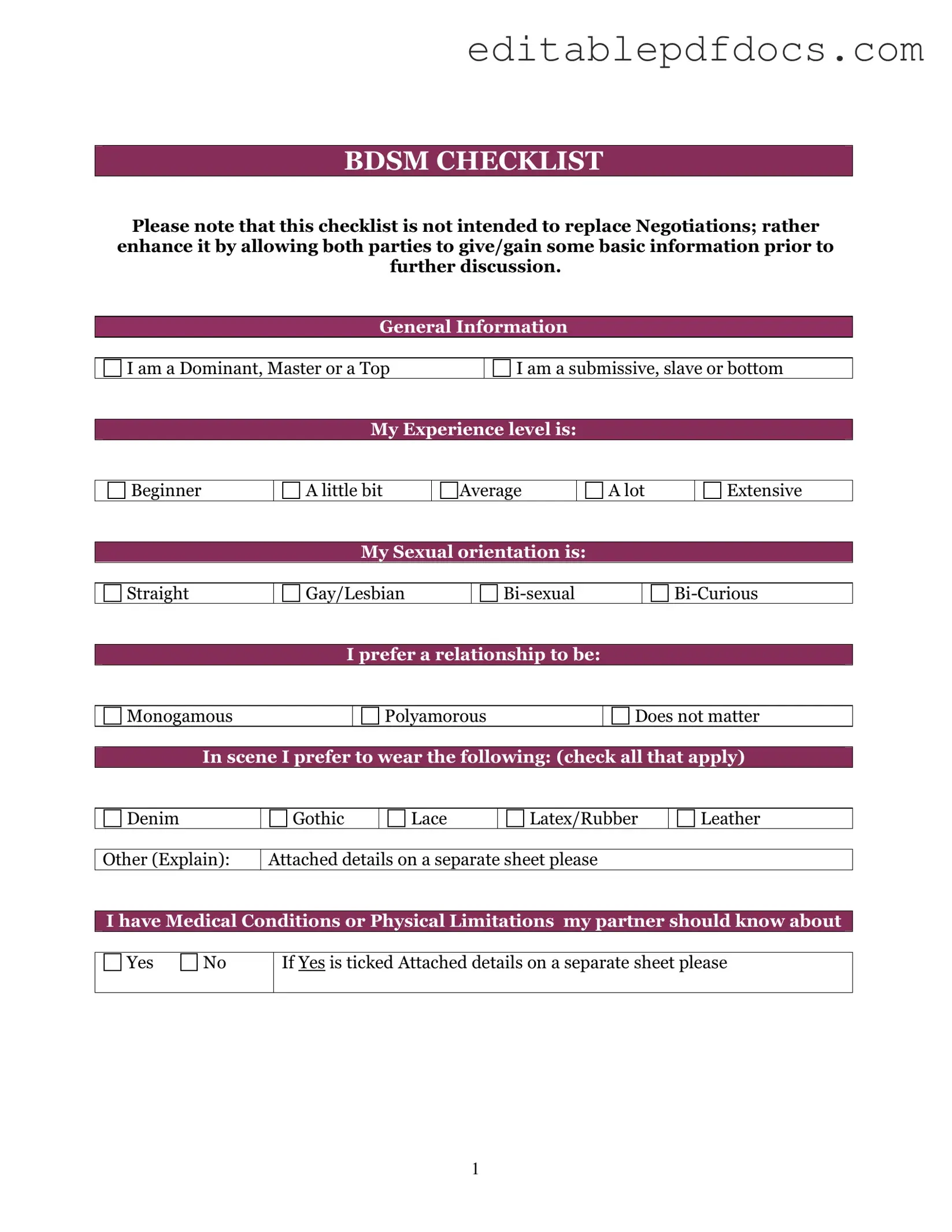The BDSM Checklist form serves as an essential tool for individuals exploring BDSM relationships, providing a structured way to communicate preferences, boundaries, and desires. This comprehensive document typically includes a variety of categories such as hard limits, soft limits, and interests, allowing participants to clearly articulate what they are comfortable with and what they wish to avoid. By addressing aspects like safety protocols, consent, and aftercare, the form fosters a culture of respect and understanding among partners. It encourages open dialogue about various activities, from bondage and discipline to dominance and submission, ensuring that all parties are informed and in agreement. Additionally, the checklist often incorporates space for personal notes, enabling users to reflect on their experiences and preferences over time. Ultimately, this form not only enhances the BDSM experience but also promotes healthy communication and trust, which are vital components in any intimate relationship.
